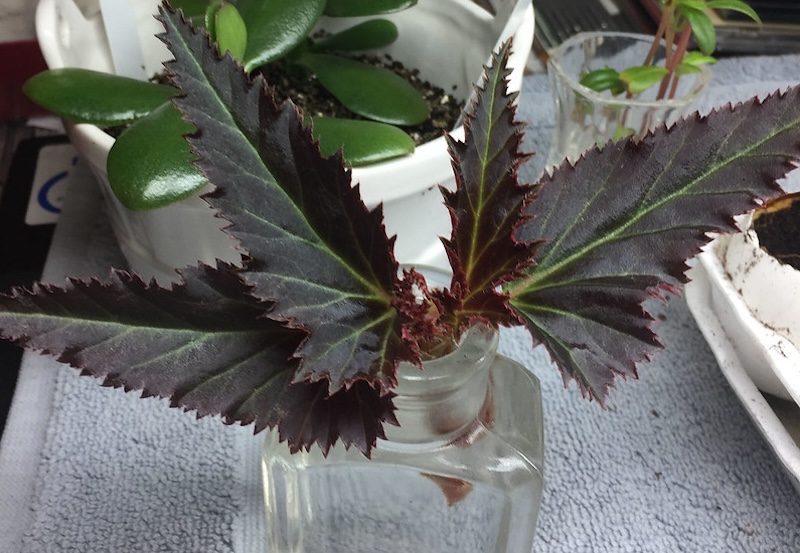Propagating Begonias is an easy task that a novice plant owner can take on and find success. While it’s possible to propagate begonias from seed, the process can be long. Stem or leaf cuttings are the method most gardeners prefer, and it is a much faster process, ensuring you’ll have full-fledged, blooming plants in no time. There are several different types of begonias, and all can be propagated through cuttings.

Photo by Laura Blanchard, cropped, Flickr, Copyright CC BY-SA 2.0 DEED
Methods To Propagate Begonias
Begonia stem cuttings are sections of the stem with the lower leaves removed. Stem cuttings should have at least two remaining leaves. The ideal stem cutting will be mature but not so old that it has become woody. These stem cuttings can be propagated in water or soil. Both methods are effective, so it is a matter of preference; however, water-propagated stem cuttings are prone to rot. Soil propagation is slightly more dependable.
What You Need To Propagate Begonias
You will need sharp pruning shears, a container with drainage holes, and a rich, moist, well-drained potting mix to propagate begonias. Increased humidity will help the cuttings establish roots, so some gardeners will place the cuttings in a naturally humid area, while others will use plastic to tent the cutting, creating a mini greenhouse. Rooting hormone can speed the process up, but it is not mandatory.
Best Time To Propagate Begonias
Begonia stem cuttings can be taken at any time. Summer is often a good time to propagate begonias. Stem cuttings taken late in the season can be propagated indoors during the winter and moved outdoors in the spring.
Steps To Propagate Begonias
Step 1 - Identify a stem section that is mature but not fibrous. Use clean, sharp pruning shears to remove the desired stem section.
Step 2 - Remove the lower leaves, but keep the upper leaves.
Step 3 - Select a container with drainage holes and fill it with a rich, moist, well-drained potting mix.
Step 4 - Dip the cut end in rooting hormone if using, although it is not necessary.
Step 5 - Position the cut end in the soil and gently press the potting mix into place.
Step 6 - Water the cutting and place it in a sunny spot.

Caring For Young Begonias Cuttings
Place the begonia cutting in bright, indirect light and keep the potting mix consistently damp. Use clear plastic to create a tent over the cutting, holding in moisture. Roots should form in three to four weeks. Continue to provide ideal conditions and care for another month until the roots have grown to about 2-4 inches long. The plant can then be transitioned to soil (if propagated in water) or transplanted to a larger container. Continue to water the plant when the top of the soil feels dry, as the tender root system is sensitive to drying out.
 |
Author Alison Cotsonas - Published 01-09-2024 |
